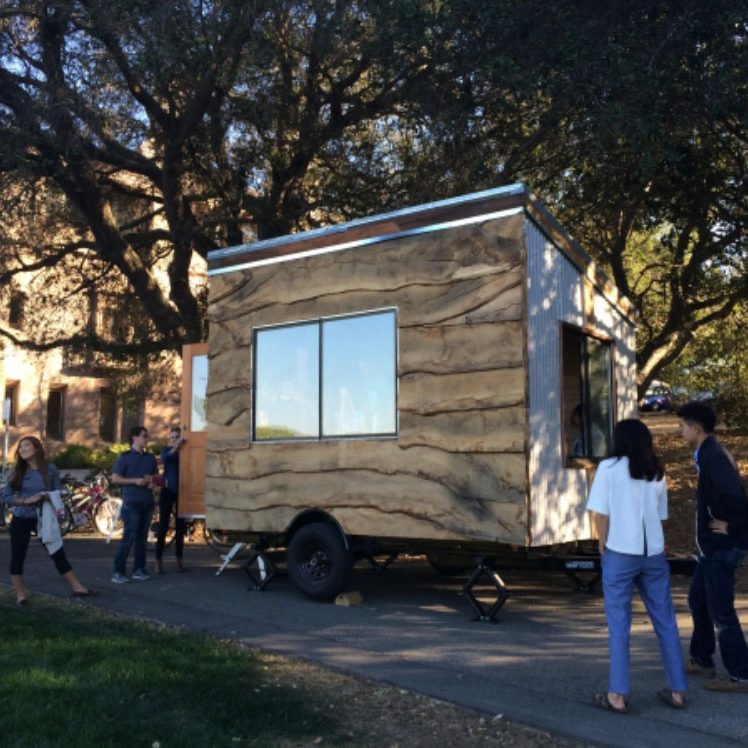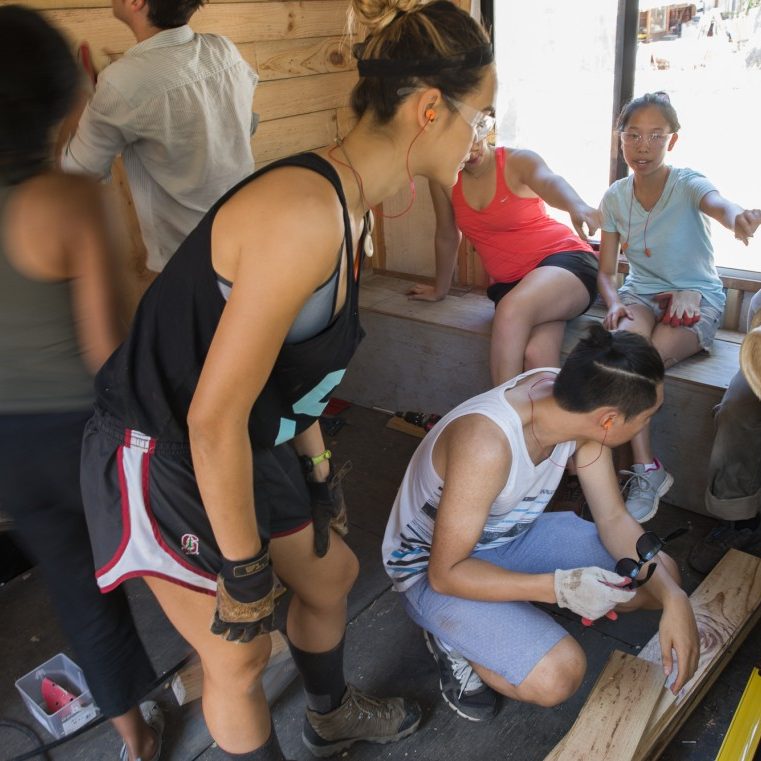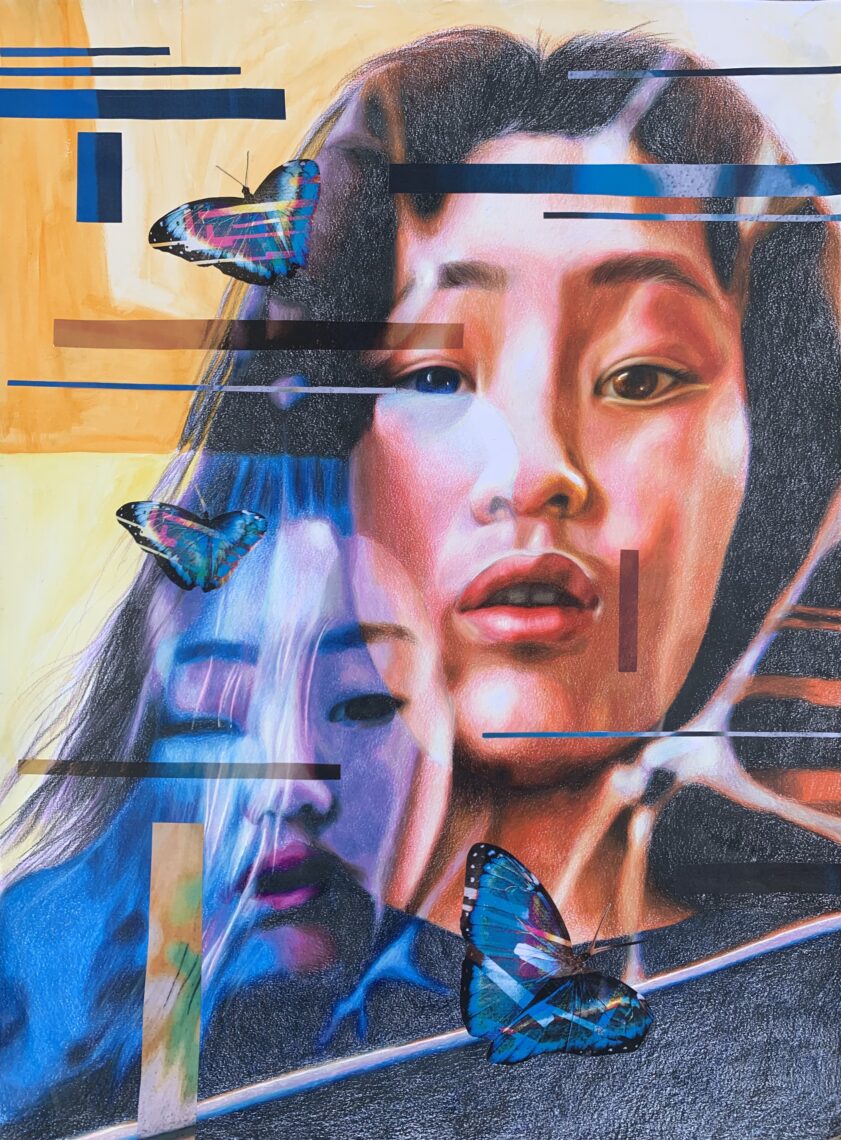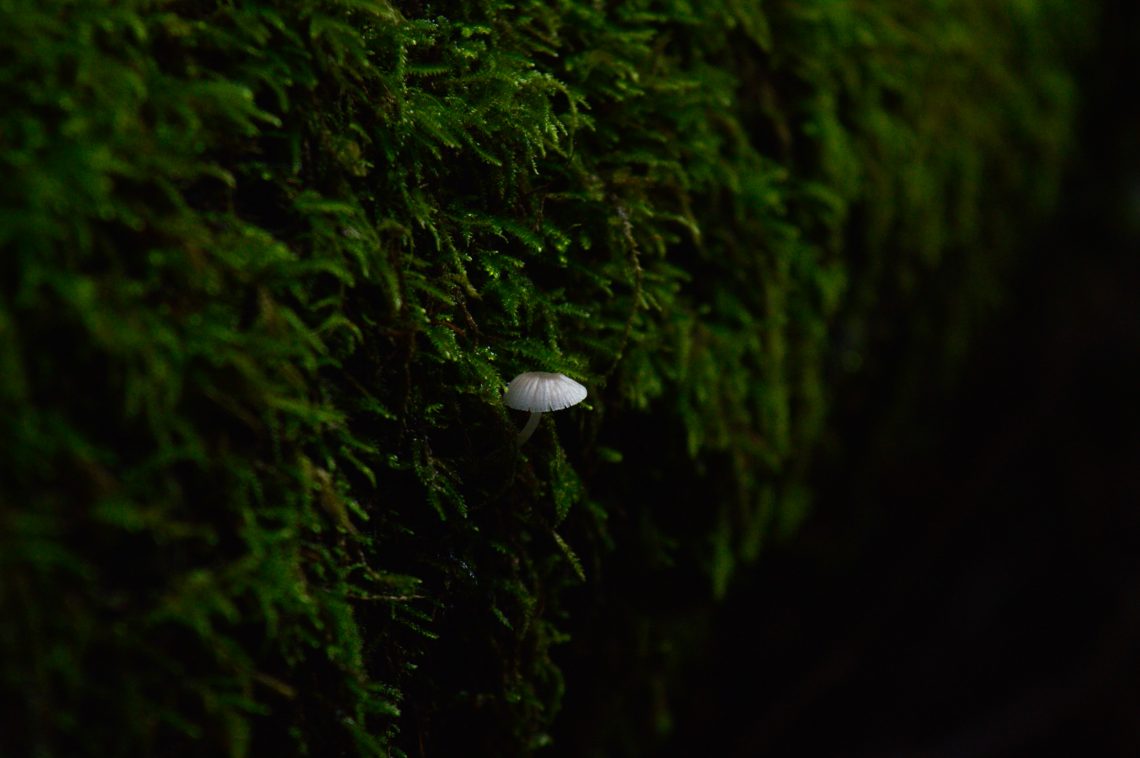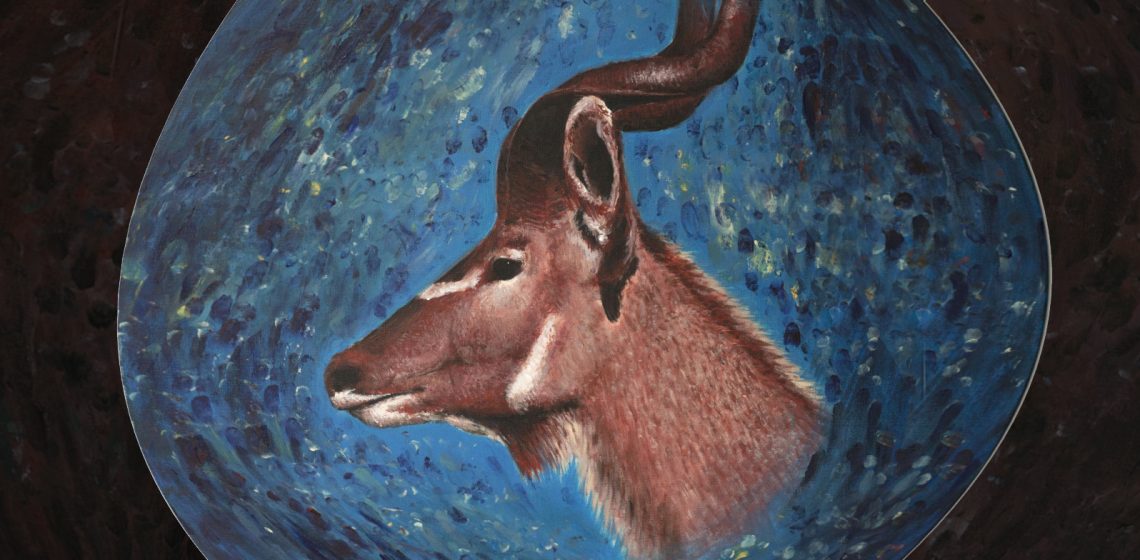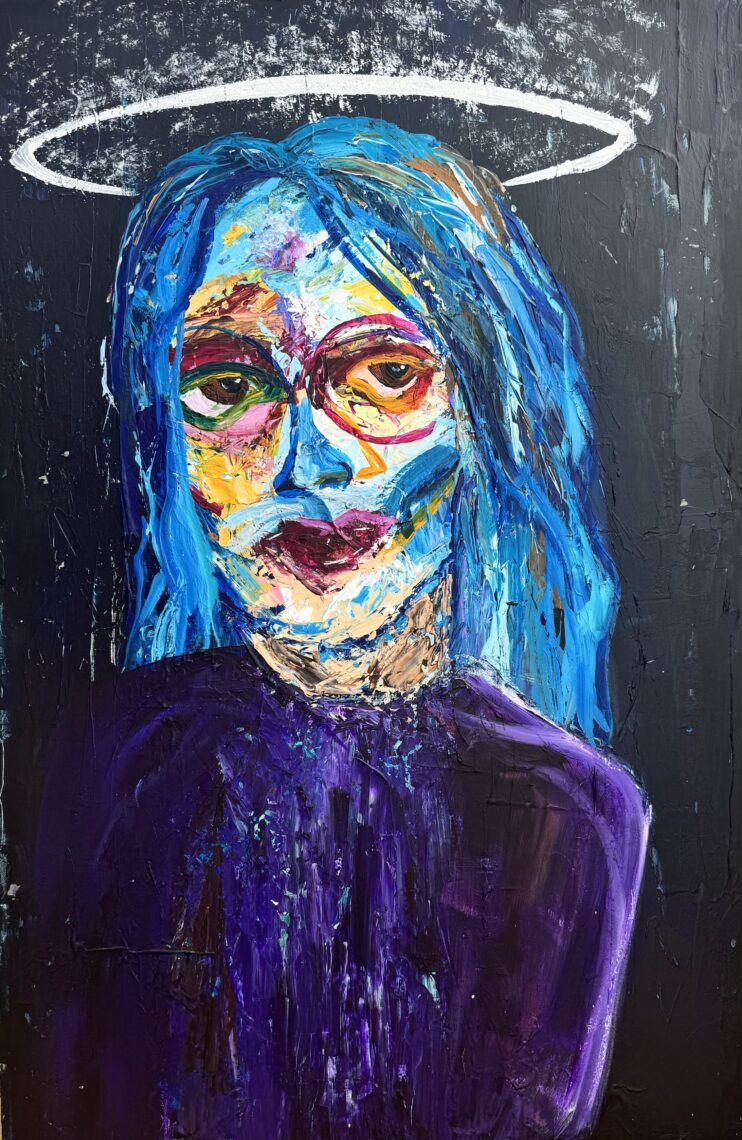About Studio 2
Three weeks before most students arrived on campus to start fall quarter 2015, guest artist David Szlasa was building an arts studio with students at Jasper Ridge Biological Preserve. The studio was built from salvaged materials largely from scrap material available at the Jasper Ridge maintenance site. The 11 students were enrolled in Szlasa’s Arts Intensive course “Tiny Eco Houses for Artists: Social Practice, Design/Build.” The objective of the course was for students to build a mobile art studio for use and demonstration on the main Stanford campus and as a studio at Jasper Ridge as a venue for artists engaging with the natural environment.
This academic year Studio 2 will be parked on campus during winter quarter and then relocate to Jasper Ridge for their first visiting artist in the spring. In the future the studio will regularly spend fall and winter quarters on campus, and spring and summer at Jasper Ridge.
“I am convinced that there is much about the experience of discovery that scientists and artists have in common and can learn from each other. I hope the mobile art studio will help expand opportunities for students, faculty and visiting scholars in the arts and humanities to experience Jasper Ridge and engage with the more traditional research and education community at the preserve.”
- Philippe S. Cohen, Executive Director of Jasper Ridge Biological Preserve
Arts Intensive
Arts Intensive is a September studies program that offers students the opportunity to study intensively with Stanford arts faculty and small groups of other Stanford students who are passionate about art. The program takes place over three weeks in September before the start of the fall quarter. Rising sophomores, juniors, and seniors are encouraged to apply.
Concept & Contact
Studio 2 is intended to: address art and design as social practice and community engagement, including curatorial practice and public programming as civic engagement; demonstrate sustainable construction and design from theory to practice; suggest scalability in design and implementation, theorizing a mobile national arts residency program; and support the dialogue around arts and environmental research.
Progress and News
11/25/15
A tiny house for art
Students build portable art studio in Stanford intensive
—Muna Sadek, Palo Alto Weekly




